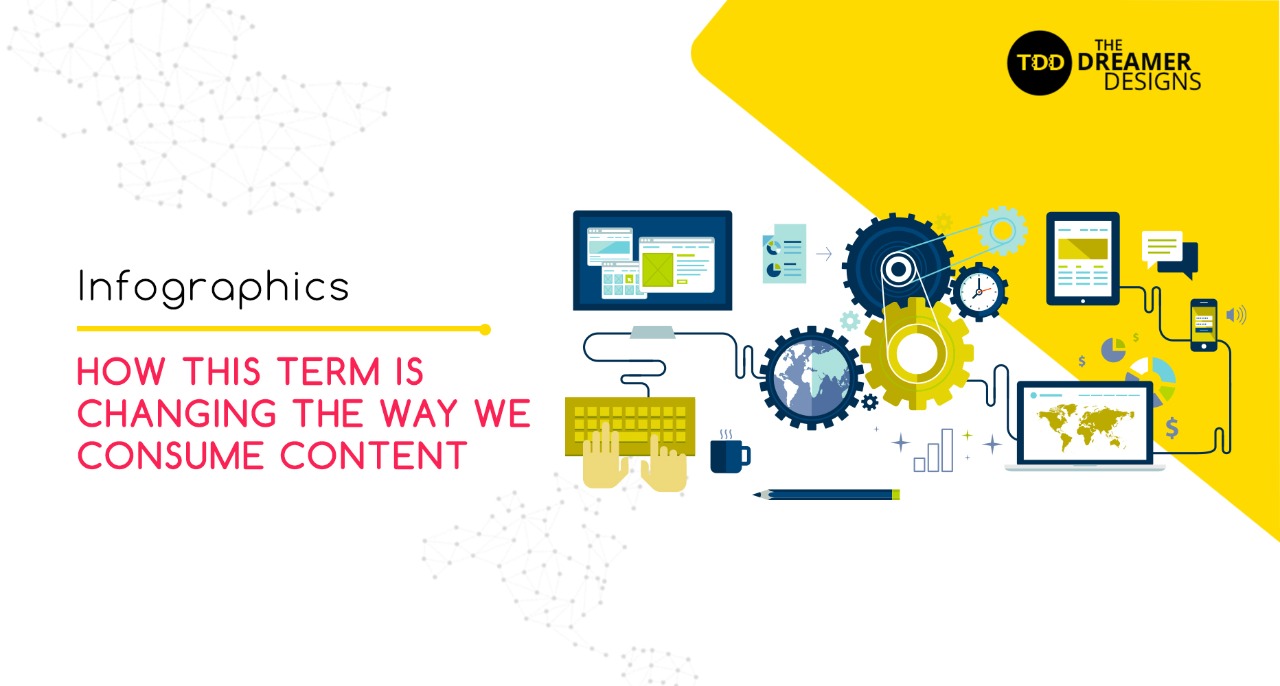
The way we consume content has been dramatically changing in the last few years. With the widespread use of the internet and the use of smartphones at a global scale has made content easily accessible. Anyone with a smartphone and an internet connection can consume as well as publish content. Owing to this, there is more content available on the internet than ever before.
However, content posted online is becoming less receptive, every single day. With average attention span shrinking from 12 seconds in the year 2000, to 8 seconds at present, ensuring that your content is even acknowledged, becomes a tough task. Since 2016, there has been a drastic increase in the amount of content being posted online, making it easily accessible to anyone at any time of day or night. This allows people to skimp through articles, photographs, podcasts, videos, etc. With decreasing attention spans, people only spend time on content that they can grasp quickly and easily. Lengthy articles showing multiple statistics and graphs are out of the competition. Unless, they’re very good and by a piece of luck, stand out.
In such a scenario, it’s especially difficult for digital marketers and businesses to come up with innovative ideas to grab the attention of users. With content being posted every second, being innovative every single time, is also a tough task. According to an article published in Time Magazine, 55% of users that visit a page, spend only an average of 15 seconds skimming through the content. In such a scenario, coming up with ideas to maximize content utility and providing all answers in 15 seconds, is imminent. This is where infographics come in place.
Infographics provide a visual representation of your content while including important data points in their body. As visual beings, we only need to skim through an infographic while gaining all the information it’s trying to provide. Thus, utilizing infographics to present information is becoming the norm in the changing landscape of content consumption. Using infographics, any business or marketer can promote products or provide content to an audience, without worrying about getting lost in the chaos of content production.Well crafted infographicstend to make content easy to understand as well as memorable.
If you were to scroll through your online feed on any platform, you would see that the way people or brands communicate, is becoming increasingly visual. Pictures have been ‘saying a thousand words’ for a very long time now and short videos are becoming the norm. In such a scenario, we can easily acknowledge that the state in which we all communicate has moved towards visual representations, take Virtual Reality for example. Currently, most marketers rely on visuals when posting anything on social media – since visuals get more reception. According to new research, over 60% of marketers have used infographics to promote their business and to increase sales. Increasing number of mobile-friendly infographics have started changing the way in which we consume content on our smartphones as well – a thing that was earlier lacking for infographics.

Infographics work because 90% of the information that the brain receives via an infographic is in the form of visual content, this makes retention a lot easier. It’s true that we tend to forget what they read faster as compared to when we see. In fact, it has been noted that when we see visual content, we trigger various emotions that help us retain more information. Visual representations also help in connecting with the business or the brand promoting the infographic. If the content shown via any infographic is true and helpful, a user is likely to return to your website for more information. With infographics, you can build a loyal customer base, thereby ensuring that your content is always consumed by your returning audience.
In fact, you can push your website further ahead with the help of HTML based mobile-friendly infographics. These infographics are responsive on mobile and help you in your SEO efforts. Made with HTML 5, these infographics are crawlable, so any text you place on your infographic can be read by Google, thereby helping your SEO efforts and pushing your content further ahead. This will also give you an edge against the competition using basic infographics to push content further.
If you wish for your content to reach your audience, you will have to compete with this rapid pace of technology. In such a world, relying on old marketing techniques will do you more harm than good. If you were to publish an article about your product, people would probably skimp through the text and might just remember the brand name, if not the name of the product. With infographics, however, you can visually represent the specs of your product while ensuring that the customer would get impressed by the data collected on said product. If the product is good and that information is publicized properly, sales will inevitably increase.
What’s important here is to create innovative infographics that help you tell that story, without getting lost in the endless amount of content present online. When a well-created infographic gets posted online, marketing it further also becomes an easy task. Once that happens, you and your business can easily take off.
So grab the attention of your user by designing infographics that can convert. There are a few online websites which you can sign up on to create great infographics. If however, you want a professionally ideated infographic, which is backed by content strategy, you can get in touch with us. With a great team of designers, researchers, and content creators, we have been leading the space of infographics and have designed over 1200 infographics for brands like Mercedes, Nokia, Microsoft, AAP, Upwork and more. The infographics that we create are made with HTML with selectable text that Google can crawl, thereby helping you in your SEO efforts, they are also stunning, animated and interactive. Created with HTML 5 and with WordPress compatibility and mobile-friendly responsive design, we can help you push forward your products or content to online audiences.
